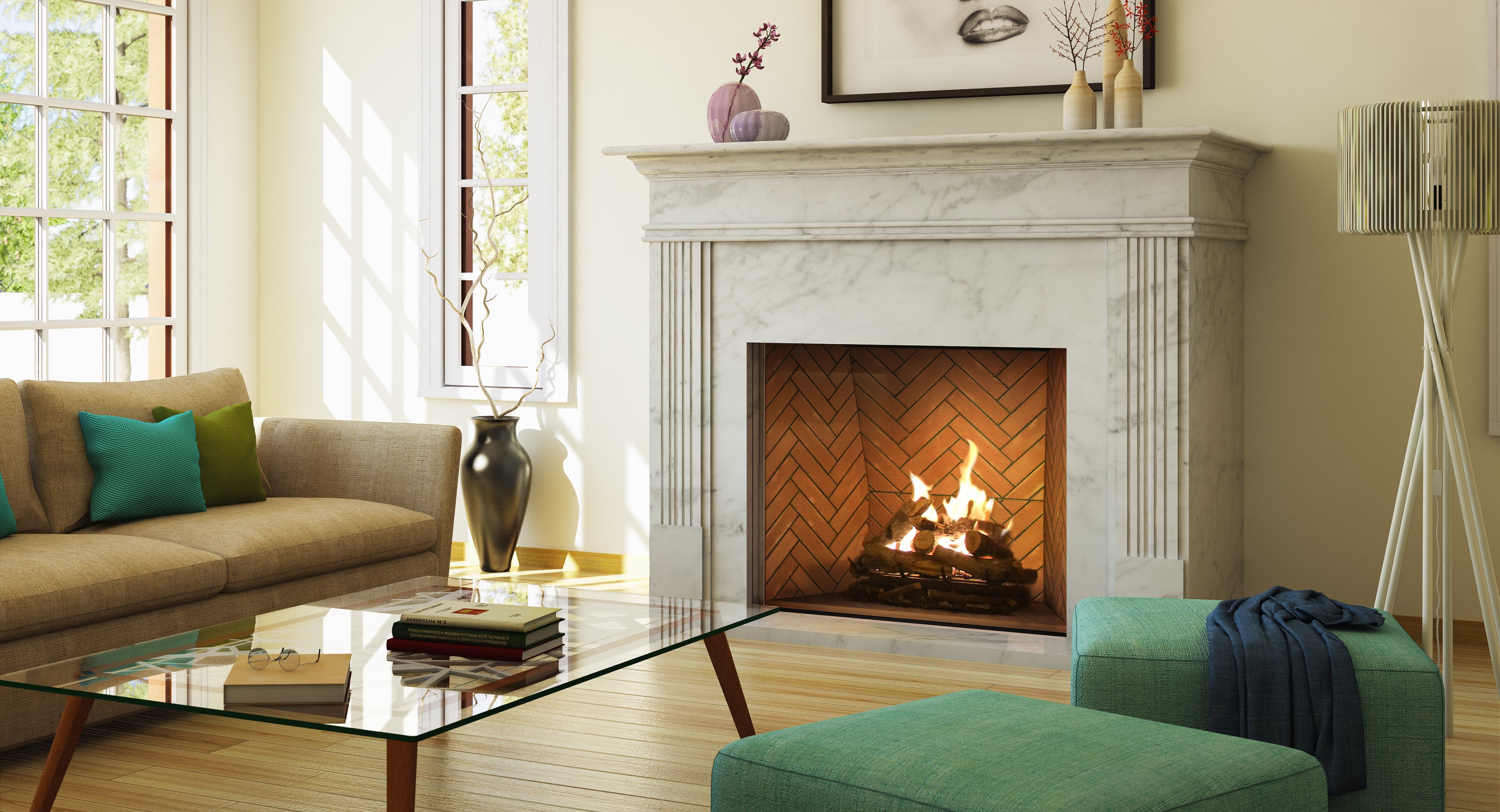Fireplace dealers are often the primary source of information for homeowners who have questions about whether to get a gas or wood fireplace. Of course, every homeowner has different needs and a unique vision for their home. Being prepared with answers to the most commonly asked questions will help you steer customers to the best fit for them.

To help your clientele decide between gas and wood fireplaces, consider these characteristics and the differences between the two options.
Aesthetics
Does the customer want a modern look, a more traditional aesthetic, or something in between? Wood fireplaces lend themselves to a traditional look, especially since they require chimneys and are limited to certain materials for the hearth and surround. On the other hand, gas fireplaces offer more flexibility in terms of the aesthetic and can be used to complement virtually any desired style, including a traditional design.
Design
Wood fireplaces offer limited design flexibility because of the need for a chimney and the other design constraints around clearances. In contrast, gas fireplaces, especially those with power venting technology, can be installed virtually anywhere, including in the center of a room, in a condo on an upper floor, or suspended from the ceiling. Gas fireplaces also offer the option of cool wall technology, which allows homeowners to hang artwork or a TV above the fireplace, with much smaller clearances and no mantel required.
Air Quality
Gas fireplaces are clean-burning and do not release particulate matter into the air. Direct venting systems also enable them to safely remove exhaust before it enters the indoor environment. On the other hand, wood fireplaces can pollute both the outside air (through the chimney) and indoor air (through smoke and ash.) For clients who are concerned about indoor air quality, a gas fireplace is typically the best option.
Convenience
A wood fireplace requires starting an actual fire, which might be desirable for some clients but could be a challenge for others. A gas fireplace can be controlled with the flip of a switch, or even with a remote control. This enables customers to use their fireplaces more frequently because they can turn them on and off whenever they want to. A gas fireplace can also be adjusted to create just the right amount of heat and light depending on the desired mood.
Ambience
There’s no denying the cozy charm of a wood fireplace crackling in the background. However, a wood fireplace can achieve only a single look. Gas fireplaces can be designed to create any type of look and feel, from modern glass stones to lifelike wood embers. Gas fireplace interiors can also be updated over time, so clients can change their fireplace design as their tastes evolve.
Safety
Although both types of systems have inherent fire safety requirements, once properly installed, a gas fireplace is much safer. When you turn the unit off, it’s off. A wood fireplace smolders and stays hot for a long period of time after you’ve stopped adding fuel. With a gas fireplace, there is no risk of embers escaping to land on floors, rugs, or furniture, which limits potential damage and keeps families safe.
Maintenance
Wood fireplaces require regular cleaning and inspection. Even the act of cleaning out the old ashes before starting a new fire is more work than some people want to take on. Gas fireplaces are easy to maintain and require no cleaning of messy ash and wood debris. Although it should be serviced at least once a year, typically through a dealer, a gas fireplace is much easier to maintain on a day-to-day basis.
Fuel
With wood fireplaces, customers must regularly purchase, transport, and store wood, which can be messy and inconvenient. It also takes up valuable space in the home. Gas fireplaces use clean-burning fuel that enters the home through lines that have been installed for seamless operation.
Gas Fireplaces Offer Flexibility and Versatility
Every customer has a different dream for their home, and dealers should be prepared to help them achieve that vision by selecting an appropriate fireplace. Understanding the advantages and disadvantages of each option is a good first step toward pointing customers in the right direction. Fortunately, the flexibility of modern gas fireplaces makes it easy to recommend products that meet all of their expectations.
Having the ability to provide ambient heat and light with gas fireplaces that can match virtually any aesthetic and overcome the design limitations presented by a chimney allows dealers to suggest solutions to any challenge. To learn more about Ortal gas fireplaces and how you can offer flexible fireplace solutions to your customers, schedule a meeting today.



